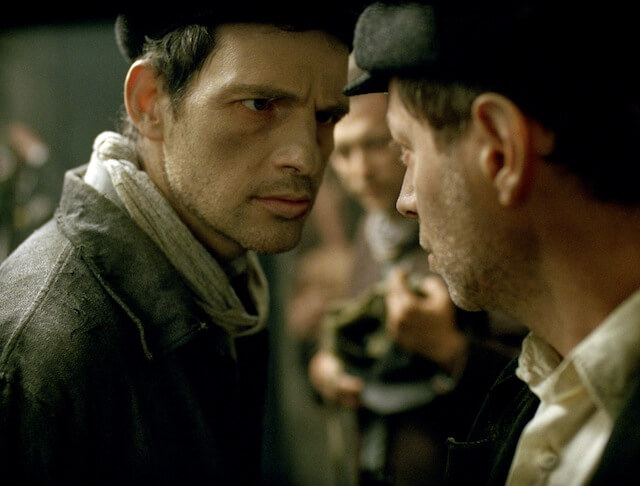‘Son of Saul’ The first thing you notice in “Son of Saul” is the technique. Then you notice the horror. It shouldn’t be that way, not when the subject is the Holocaust and the setting is Auschwitz-Birkenau. It’s, almost factually, a brilliantly made film. For his first feature, Hungarian filmmaker Laszlo Nemes doesn’t just borrow from the handheld realism of Jean-Pierre and Luc Dardenne (“Two Days, One Night”) and long take master Bela Tarr, under whom he mentored. He expertly recreates it, fusing their styles to create a horrorshow whose carefully chosen images, with their play between background and foreground action, force the viewer into becoming an active participant. RELATED: Review: “James White” pushes in close on a troubled Christopher Abbott Whether “Son of Saul” is brilliantly felt is another matter. Despite its obvious noble intentions, “Son of Saul” is narratively boilerplate, with a story cobbled together from other Holocaust tales we’ve seen time and time again. Our guide — and he really is a guide, since this is a tour close to the old, Walter Cronkite-narrated educational show “You Are There” — is Saul (Geza Rohrig), a haunted member of the Sonderkommando, the concentration camp units comprised of inmates forced, under threat of death, to aid in the disposal of their brethren. He tries not to look up as he shuffles past mass executions. His only distraction is a mission: He’s found a dead boy who may be his son, and he seeks to give him a proper, religious funeral. It’s not too cynical to think Nemes calculated what would make a great (if not attention-nabbing) film, then did just that. Of course “Son of Saul” pushes its camera uncomfortably close to its haunted protagonist. Of course it has no score. Of course it’s shot in the super-restricting, boxy “Academy” aspect ratio. Of course it keeps the atrocities in the background of frames and out-of-focus, to mimic how Saul himself is trying to ignore them.(One thing that is surprising is how it avoids making long takes seem show-offy. Whereas “The Revenant” begs us to wow at how long it goes without a cut, Nemes, and his cinematographer, the great Matyas Erdely, don’t let their mere 85 shots, over 107 minutes, go over the four-minute mark. They instead seem like comparative bursts of exactitude.) And of course, it all basically works. Though it’s been accused of aestheticizing real tragedy, it’s not skin deep. That’s in no small part thanks to Rohrig’s withdrawn performance — one of those turns that’s all in the ever-darting eyes — it’s a grueling, emotional experience, and one that smartly plays off our lack of access to what Saul’s thinking. We don’t know, for instance, whether the dead child is his child, or if he ever had a child. As he pursues his singleminded task, putting himself, and others, in harm’s way, we’re forced to see it as a symbolic act — an exorcism of his demons, self-punishment for the sins he’s committed. RELATED: Review: “Macbeth” offers another brutal take on “The Scottish Play” But it’s all too clean, which is to say it’s often too contrived. Though it vies for realism, often told in real time, it also crams every incident that could happen in a story like this: the shower execution, the mass fire, the attempted escape, the “Children of Men”-style long take through unimaginable and perfectly timed chaos. Even the appearance of an inmate wielding a film camera — based on truth — seems slipped in to cross off another mark on a checklist. The one thing that could seem genuinely new to Holocaust cinema — namely, following a guilt-ridden Sonderkommando — has even been done before, and better, in Tim Blake Nelson’s “The Grey Zone.” Undersung when it came out in 2001, it manages to be all the things “Son of Saul” is without the bells and whistles, and with a deeper connection to the material beyond the formal. Instead, “Saul” is like a connect-the-dots austere art film. And yet it still devastates. After all, how could it not?
Director: Laszlo Nemes
Stars: Geza Rohrig, Levente Molnar
Rating: R
3 (out of 5) Globes
‘Son of Saul’ is an immaculately made but mostly shallow Holocaust drama

NYFF
Follow Matt Prigge on Twitter@mattprigge
















